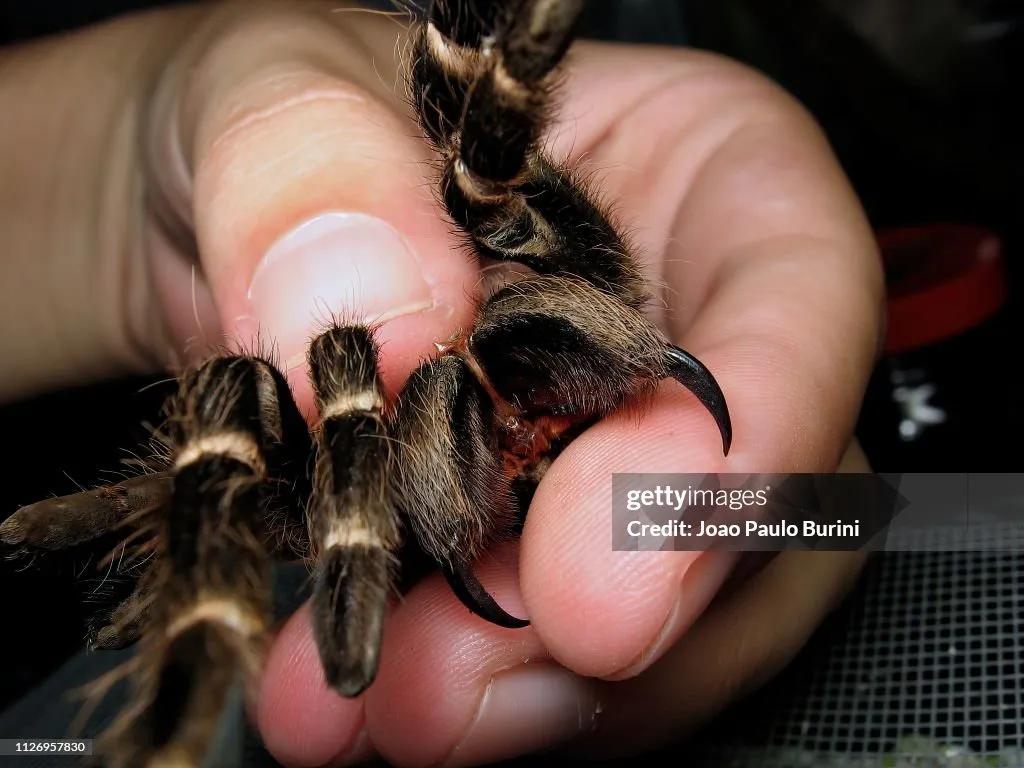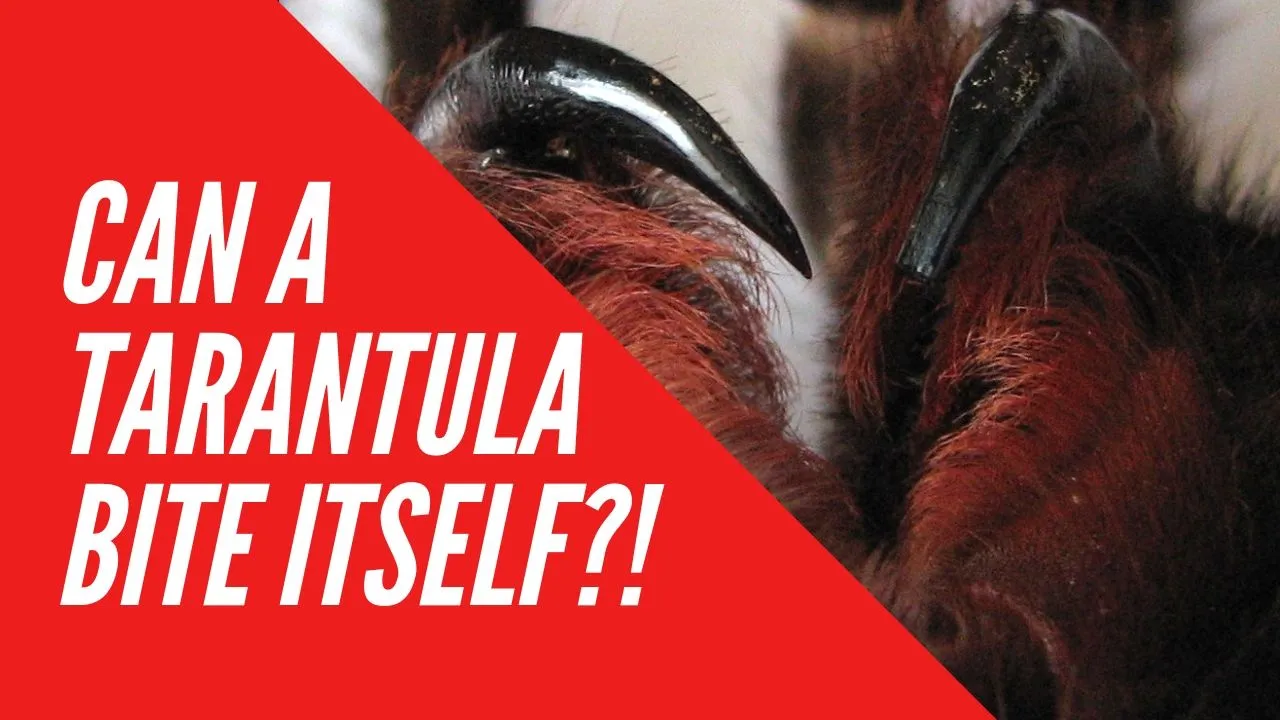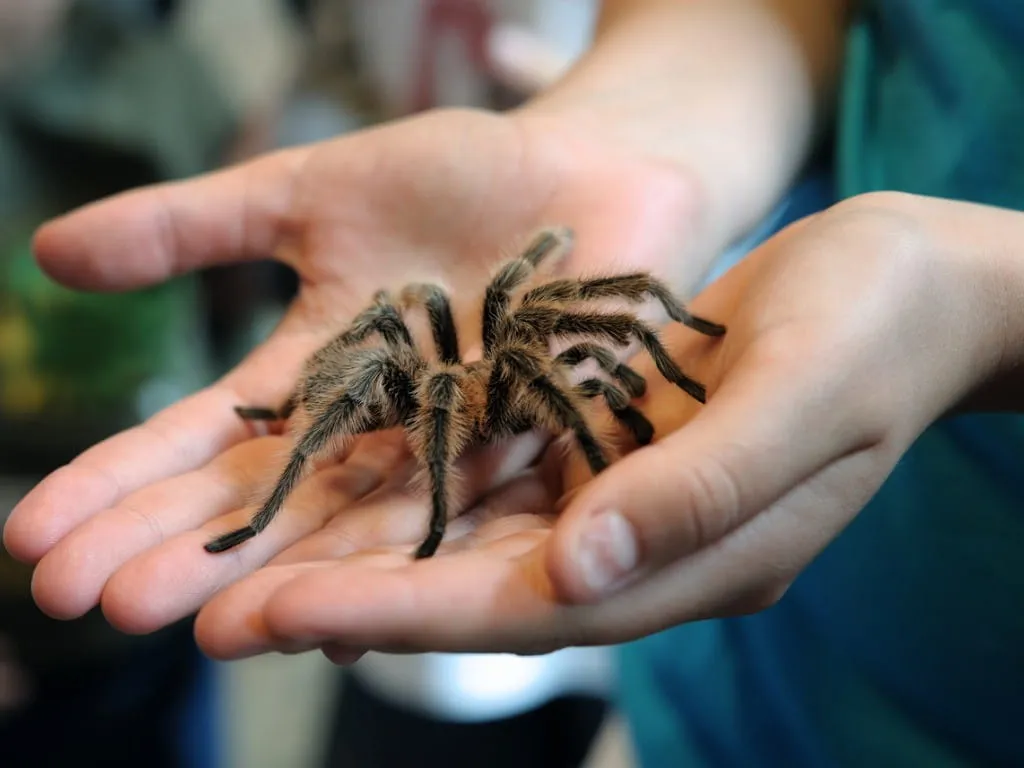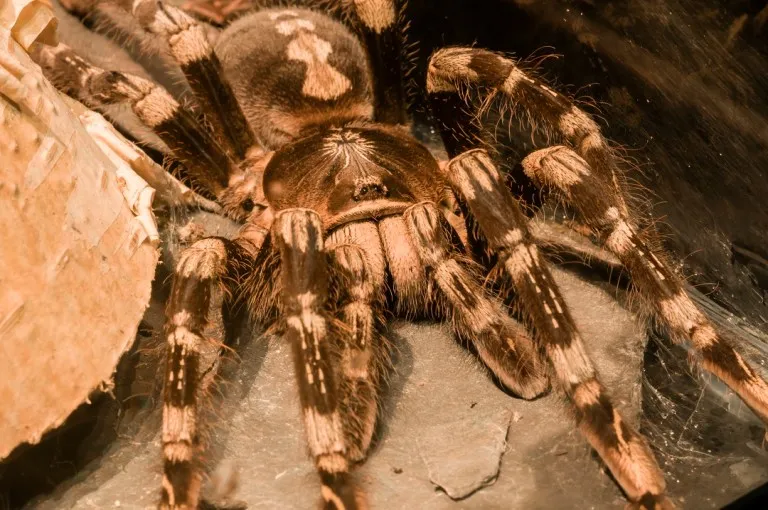What to Do After a Tarantula Bite
A tarantula bite, while rarely life-threatening, can be a frightening experience. These large spiders possess fangs capable of injecting venom, which can cause varying degrees of discomfort depending on the species of tarantula, the amount of venom injected, and the individual’s sensitivity. This guide provides a comprehensive overview of the steps to take if you or someone you know is bitten by a tarantula, from immediate first aid to long-term recovery and prevention. Understanding the appropriate responses can help mitigate the effects of the bite and ensure a swift and safe recovery. Remember, quick action is key, but staying calm and informed is equally important.
Identify the Bite
The first step after a suspected tarantula bite is to confirm it. This can be challenging, as the initial sensation might be minimal or confused with other injuries. However, identifying the characteristics of the bite and the spider involved is crucial for proper treatment. Look for puncture marks, redness, swelling, and any local pain or itching. Carefully observe the bite site for any visible evidence of the spider’s fangs. Additionally, try to identify the tarantula species if possible, as different species have varying levels of venom potency and can cause different reactions. Knowing the species can assist medical professionals in providing appropriate treatment. This initial assessment will guide the subsequent actions, influencing the urgency of medical intervention and the specific first aid measures to be taken.
Recognizing Tarantula Species

Identifying the specific tarantula species can significantly aid in determining the severity of the bite and the appropriate medical response. While most tarantulas have relatively mild venom, some species possess more potent venom that can cause more severe symptoms. Observe the spider’s size, color, and any distinct markings. Refer to reliable sources such as field guides, online databases, or experts if possible. This information is valuable to medical professionals in assessing the potential impact of the bite and selecting the most effective treatment options. Capturing a photograph of the spider from a safe distance can also provide useful information without risking further harm. If the tarantula is unknown or difficult to identify, it’s important to report all the details you can to medical professionals, as they will then be able to help with the treatment.
Identifying Bite Symptoms
Symptoms of a tarantula bite can range from mild to moderate, depending on the species and individual sensitivity. Common symptoms include localized pain, redness, swelling, and itching at the bite site. Some people may experience muscle cramps, nausea, or a general feeling of unease. More severe reactions, though rare, can include difficulty breathing, increased heart rate, or severe allergic reactions. It is essential to monitor the individual closely for any signs of a systemic reaction, such as widespread swelling, hives, or difficulty breathing. Note any unusual or rapidly worsening symptoms. If any concerning symptoms arise, seek immediate medical attention. The more information you can provide the medical professionals, the better they will be able to assess and treat the bite.
Immediate First Aid Steps
Prompt first aid can minimize the impact of a tarantula bite and promote a quicker recovery. These initial steps aim to reduce venom absorption, alleviate pain, and prevent complications. Act quickly but calmly. While some bites may seem harmless, it is always best to act with caution and follow established first aid guidelines. Remain calm and remember that most tarantula bites are not life-threatening, although they can be very uncomfortable. First aid will help ensure the individual remains safe and comfortable until medical help arrives.
Rinsing the Wound

The first step in treating a tarantula bite is to gently rinse the wound with clean, running water. This helps remove any remaining venom on the skin and reduces the risk of infection. Use mild soap if available, but avoid harsh chemicals or scrubbing, which could irritate the wound. Rinse the area thoroughly for several minutes. Gently pat the area dry with a clean cloth or sterile gauze. Rinsing is a basic yet crucial first aid step that can minimize the local effects of the bite. Make sure that the water is clean and that any foreign matter is rinsed away, because dirt can infect the bite.
Applying Cold Compress
Applying a cold compress can help reduce pain, swelling, and inflammation at the bite site. Wrap an ice pack or a bag of ice in a clean cloth and gently apply it to the affected area for 10-20 minutes at a time. Repeat this process every few hours as needed. Ensure that the ice pack is not in direct contact with the skin to prevent frostbite. This simple step can provide significant comfort and may help to slow the spread of venom and reduce the overall severity of symptoms. Cold compresses can also make the area less sensitive, lessening the discomfort.
Seeking Medical Attention
While most tarantula bites are not life-threatening, it’s important to seek medical attention, especially if symptoms are severe or if you have any concerns. The doctor can assess the bite, provide appropriate treatment, and monitor for any complications. The type of medical assistance needed can vary, but the decision to seek medical help should be based on a careful evaluation of the symptoms and the individual’s overall health. Early medical intervention can often improve outcomes and minimize the risk of prolonged complications. In case of any serious symptoms, a doctor should be sought immediately.
When to Go to the Hospital

Certain symptoms warrant immediate medical attention and a trip to the hospital. These include difficulty breathing, chest pain, severe swelling, dizziness, or any signs of an allergic reaction. If the bite is near the face, throat, or mouth, seek medical help promptly due to the potential for airway obstruction. Any systemic symptoms, such as nausea, vomiting, or muscle cramps, also require immediate evaluation. Even if the initial symptoms seem mild, it’s always better to err on the side of caution, especially if you are unsure of the tarantula species or if you have a history of allergies or sensitivities. It’s better to be checked and know everything is ok.
What to Tell the Doctor
When seeking medical attention, provide the doctor with as much information as possible. This includes the location of the bite, the time it occurred, and any symptoms you’ve experienced. If possible, describe the tarantula’s appearance, or bring a photo if you took one. Mention any pre-existing medical conditions, allergies, or medications you are taking. This information will help the doctor assess the situation accurately and determine the best course of treatment. The more details you can give, the better the medical professionals can help. Sharing as much information as you can will help them give you the most accurate diagnosis and determine what treatments will be best for you.
Treatments and Medications
Treatment for a tarantula bite focuses on managing symptoms, preventing infections, and, in rare cases, administering antivenom. The approach will depend on the severity of the bite, the symptoms experienced, and the individual’s health. Most treatments are aimed at providing relief from pain and discomfort while the body naturally recovers. Medical professionals will monitor the symptoms and address any complications that may arise. They will also determine the need for additional medication, such as pain relievers, and ensure the patient recovers as quickly as possible.
Pain Management

Over-the-counter pain relievers, such as ibuprofen or acetaminophen, can help manage pain and discomfort at the bite site. For more severe pain, a doctor may prescribe stronger pain medication. Follow the instructions on the packaging or as directed by your doctor. Do not exceed the recommended dosage, and be aware of any potential side effects. The application of a cold compress will also assist with pain relief. The focus is always on pain relief and providing comfort. A cold compress and pain relievers can provide significant relief. If the bite is severe, the doctor may prescribe stronger medication.
Antivenom Information
Antivenom is rarely needed for tarantula bites, as most species do not have highly potent venom. However, if a bite from a more venomous species causes severe systemic symptoms, such as difficulty breathing or cardiovascular issues, antivenom may be administered. Antivenom works by neutralizing the venom and preventing further damage. It is typically given intravenously in a hospital setting, and its use is carefully considered based on the severity of the symptoms and the species of tarantula involved. Antivenom is a serious treatment and is only required in severe cases.
Preventing Infections
Preventing infection is crucial after a tarantula bite. Keep the wound clean and dry, and avoid scratching or picking at it. The doctor may prescribe antibiotics if there is a high risk of infection or if an infection develops. Monitor the bite site for signs of infection, such as increasing redness, swelling, pus, or fever. Seek medical attention immediately if you suspect an infection. Proper wound care and monitoring can help prevent serious complications. If there are any signs of infection, seek medical attention immediately to prevent the infection from becoming worse.
Recovery Process

The recovery process after a tarantula bite varies depending on the severity of the bite and the individual’s response. Generally, most people recover within a few days to a couple of weeks. During this time, it’s essential to take care of the bite site, monitor for any complications, and follow your doctor’s recommendations. The following guidelines will help you recover safely and with minimal discomfort.
Expected Recovery Time
The typical recovery time after a tarantula bite is usually between a few days to two weeks. However, the exact duration depends on several factors, including the severity of the bite, the individual’s health, and the effectiveness of the treatment. Mild bites may heal within a few days, while more severe bites might take longer. Follow your doctor’s instructions carefully and attend any follow-up appointments as scheduled. If your symptoms worsen or persist beyond the expected recovery time, contact your doctor for further evaluation. It is always best to follow up to make sure everything is healing.
Caring for the Bite Site
Proper care of the bite site promotes healing and prevents complications. Keep the area clean and dry, and wash it gently with mild soap and water daily. Apply any prescribed ointments or medications as directed by your doctor. Avoid scratching or picking at the bite, as this can increase the risk of infection. Cover the bite with a clean bandage to protect it and prevent further irritation. Monitor the area for any signs of infection, such as increased redness, swelling, warmth, or pus. Keeping the area clean, protected, and monitored will ensure a quick recovery.
Possible Complications

While rare, complications can occur after a tarantula bite. These may include secondary bacterial infections, allergic reactions, or, in severe cases, more serious systemic reactions. Watch for signs of infection, such as increasing pain, redness, swelling, warmth, or pus. If you experience any concerning symptoms, seek immediate medical attention. Be aware of the potential for allergic reactions, such as difficulty breathing, hives, or swelling of the face, lips, or tongue. If you experience any of these symptoms, seek emergency medical care immediately. Knowing what to watch for and seeking help when needed can help prevent complications from becoming worse.
Preventing Tarantula Bites
Preventing tarantula bites involves understanding tarantula behavior, practicing safe handling techniques, and creating a safe environment. By following these guidelines, you can minimize your risk of being bitten and reduce the need for medical intervention. Prevention is always the best approach when it comes to tarantulas. With the correct understanding of their behavior and how to handle them, bites can be avoided, and you can enjoy them safely.
Safe Handling Practices
If you own or handle tarantulas, always handle them with extreme care. Avoid sudden movements, as this can startle the spider and provoke a defensive reaction. Use appropriate tools, such as tongs or a container, to move or handle the tarantula. Do not handle tarantulas unless necessary, and never handle them with bare hands unless you have extensive experience with the species and its behavior. Always supervise children around tarantulas and educate them about the risks. If you do need to handle a tarantula, do so with great caution, and avoid any sudden movements. Always be patient, and give the spider space.
Choosing the Right Habitat

When keeping tarantulas as pets, create a secure and appropriate habitat that prevents escapes and reduces the risk of bites. Use a secure terrarium with a tight-fitting lid. Ensure the enclosure is large enough for the tarantula to move comfortably. Provide suitable substrate and furnishings, such as hides and climbing structures, to mimic their natural environment. Handle the terrarium carefully, and be aware of the tarantula’s location at all times. Regular maintenance, cleaning, and proper ventilation of the enclosure are essential for the tarantula’s well-being and your safety. Making sure your tarantula has the right habitat is critical for their health and your safety.
Understanding Tarantula Behavior
Understanding tarantula behavior is key to preventing bites. Tarantulas are generally not aggressive and will typically try to escape or flee rather than bite. However, they may bite if they feel threatened or if they are defending themselves. Learn to recognize signs of stress or agitation, such as raising their front legs, flicking their legs, or raising their abdomen. Avoid approaching or handling a tarantula if it exhibits these behaviors. Always be mindful of the tarantula’s environment and avoid anything that may cause it stress. Approach tarantulas with respect, and be mindful of their behavior.
